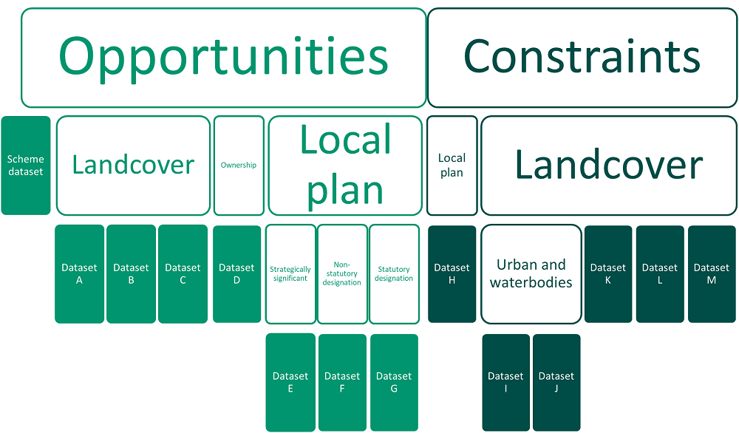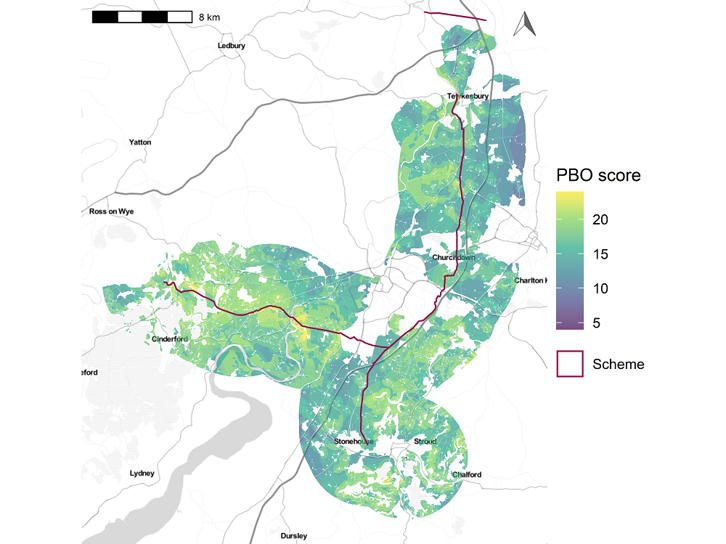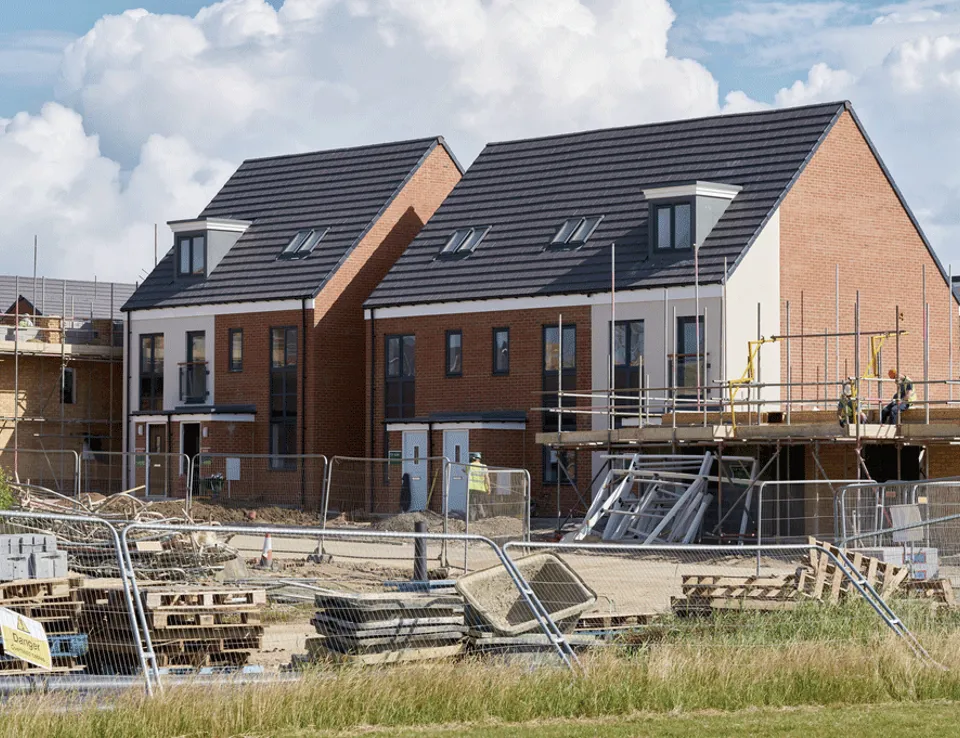Mandatory biodiversity net gain targets in England: a tool to identify opportunity areas
Planning and infrastructure: what this means for industry
Mandatory Biodiversity Net Gain (BNG) targets due to come into effect in England later this year, relating to planning and development, present additional challenges for all businesses and councils already grappling with sustainable development requirements.
BNG is underpinned by the Environment Act 2021, where development is required to:
- Encompass biodiversity reporting;
- Implement nature-based spatial strategies including Local Nature Recovery Strategies where possible and;
- Engage in strengthened legal duties and policies to ensure habitat conservation and enhancement ambitions are not only achieved in the short term, but will leave the natural environment in a measurably better state for the next generation.
Many industries are already aware of the operational impact of this change. For example, Ofwat (the Water Services Regulation Authority) has set performance commitments that incentivise habitat conservation and enhancement using BNG principles within the water industry. Yet for many businesses and councils there is still a lot of uncertainty about how, where and when to implement mitigation on-the-ground. Add to this the need for identifying habitat-related net gain alongside wider natural and societal capital benefits (which are inextricably linked), and other mandatory requirements such as nutrient neutrality targets, and planning for environmentally sound new infrastructure just got a whole lot more complicated.
The issue
Simply put BNG (that demonstrates at least 10% gain) needs to be secured for at least 30 years. However, in practice, understanding where and how this can be delivered to provide the biggest net gain can be a complicated process. Delivery entails: ensuring no double counting occurs with other developments; joining up opportunities for economic, societal and wider natural capital with the widest ecological benefit outcome; identifying accessible sites in close proximity to the development; and cost-effective implementation. And these are just a few elements to consider. Individually, each one of these tasks can be challenging but to deliver as a total package – is no mean feat.
Whilst Natural England’s habitat-based Biodiversity Metric (currently version 3.1) approach assesses changes in biodiversity value (losses/gains), what it does not provide is a means to rapidly identify potential opportunity areas. Add to this limited available ecological expertise1 within industry due to a general skills shortage, coupled with a lack of/competition for available delivery locations near development sites, and planning for net gain in time for the last quarter of 2023 and beyond, becomes even more complex.
Identifying potential net gain opportunities: a tool to help
Once a BNG assessment has taken place, identifying areas on-site or off-site that are suitable for habitat enhancement or creation needs to be understood. Identifying potential locations prior to completion of specific habitat surveys is not easy, especially at large scale or where multiple sites are needed to present opportunities that deliver a minimum of 10% gain.
To speed up this process, Ricardo – through working with numerous clients on BNG assessments – has developed an opportunity detection tool. Initially designed to enable local planning authorities to map out Local Nature Recovery Strategy opportunities, the tool has subsequently been enhanced to encompass wider net gain needs. Our geospatial experts have been working closely with our ecologists to develop the Potential Biodiversity Opportunities (PBO) tool, designed to detect suitable sites that could provide habitat creation and enhancement opportunities based on a range of parameters.
What does the tool do?
The tool has been developed to consider all land parcels within a given planning application boundary. Scores are assigned to each site to indicate net gain potential related to parameters such as size, proximity to designated sites, landcover, ownership and local plans, and policies where strategic thinking has already considered green networks and key opportunity sites etc (see Figure 1). It is underpinned by a large range of opensource data sets (currently over 20) that are nationally available. Using a combination of these and other local data sets, the tool can be adapted to take account of local requirements by tailoring to user needs, for example by altering distance parameters and accounting for local ambitions and land ownership.
Figure 1 Examples of opportunity and constraint approach that underpins the PBO*

*data sets used can be flexible related to the requirements and ambitions
Tool features: supporting decision making
The PBO tool is designed to identify sites that have the highest potential to offer functioning biodiversity in the long-term. The tool exports identified sites into GIS shapefile format so maps can be produced to allow for further analysis. (See Figure 2 example chart where the highest score = the greatest biodiversity benefit opportunity area). The tool is underpinned by geospatial coding, allowing for site lists to be exported into excel. Sites are then prioritised based on client-agreed input criteria to support decision making for best BNG locations that also achieve additional societal benefits.
Figure 2: Example of mapping from the PBO tool based on a range of parameters

Are you ready for BNG to come into effect – what is needed?
The Environment Bill clearly places local authorities in the driving seat for approving BNG submissions and to subsequently ensure objectives are met. To achieve this will necessitate collective action across the whole industry where planning new development is likely to occur.
The 4 key constraints to achieving targets are the required timeframes, accessible implementation expertise, identification of suitable sites and the volume of BNG likely to be required across England.
Ricardo’s PBO tool can help clear the path forward by supporting:
- Bespoke BNG planning through identification of strategically significant sites that could be allocated for mitigation.
- Identification of additional benefits for society and economics based on the data and assessment that underpins the tool to support wider sustainability goals.
- Fast tracking of BNG opportunities by providing an early list of sites which could be used for mitigation.
- Identification of habitat survey requirements and extent for both ground truthing and demonstration of success at mitigation sites relative to stated ambitions.
- The flagging sites already intended for other infrastructure projects to avoid double counting.
- Positive stakeholder engagement by providing an unbiased list of opportunities and mapping for discussion.
Ricardo works closely with developers, utility companies and government agencies to provide ecological advice around biodiversity and BNG in support of strategic plans, planning applications and consenting from statutory bodies. For support in any of these areas and/or to access Ricardo’s PBO tool, get in touch.
Footnote
1. A recent report undertaken by the Association of Local Government Ecologists in June 2022 identified that for example, approximately 26% of LPAs do not have any access to ecological expertise. Of the LPAs that do 45% need to use support from outside the organisation. The same reports suggests that in most case access to ecological resource to scrutinise all planning applications affected by BNG is limited.









